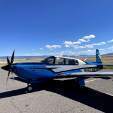Need assistance with Ifr Garmin database question
-
Members Online
- Will002
- T. Peterson
- FlyingScot
- Neshi
- Fly Boomer
- Steve - 37179
- Brad B
- EricJ
- Midwestmooniac
- MikeOH
- Evelyn Craik
- Ragsf15e
- 201er
- eman1200
- Speed Merchant
- TCC
- LANCECASPER
- PT20J
- Zippy_Bird
- carusoam
- McMooney
- kowabunga
- winglers
- GeeBee
- Beechbum
- RescueMunchkin
- Mac80
- Mooney-Shiner
- alextstone
- Willpool101
- ELysek1
- Brian E.
- Niko182
- 7.Mooney.Driver.0
- atpdave
- mmcdaniel33


Recommended Posts
Join the conversation
You can post now and register later. If you have an account, sign in now to post with your account.